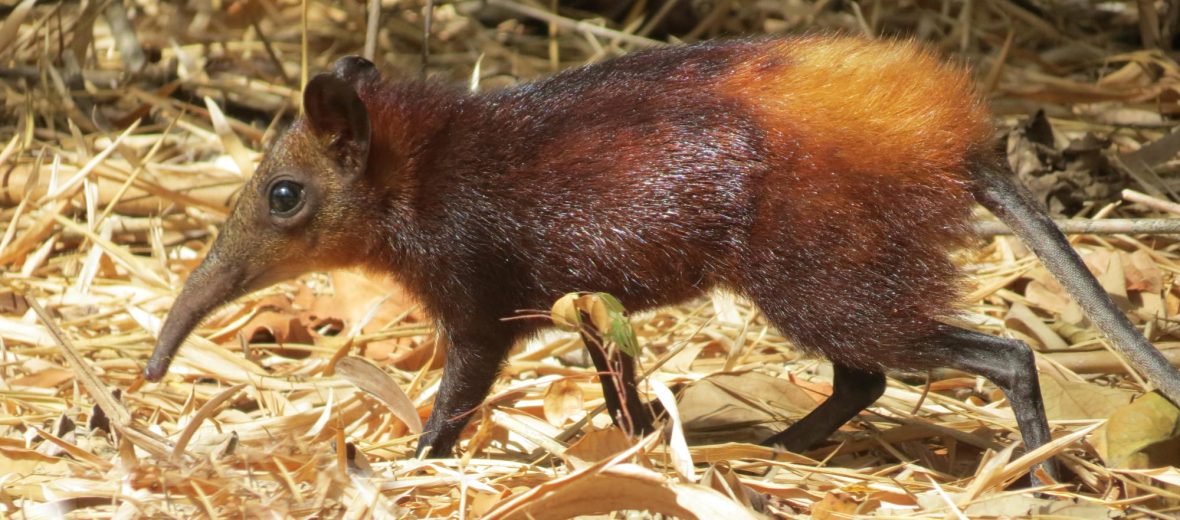
The golden-rumped elephant shrew, aka golden-rumped sengi, is the largest of the known elephant shrews. They hail from Arabuko Sokoke National Park Mombasa, in Kenya. They prefer moist, dense-brush forests and lowland semi-deciduous forests in coastal areas. These unique looking critters face the threats of habitat destruction and loss at the hands of residential and commercial developments and the timber industry; hunting; and trapping. They are listed as Endangered by the IUCN, with an estimated population of just 13,000, as of 2013. Their numbers are also decreasing.
First the Stats…
Scientific name: Rhynchocyon chrysopygus
Weight: Up to 1.2 lbs.
Length: Up to 11.5 inches, plus up to a 10 inch tail
Lifespan: Up to 5 years
Now on to the Facts!
1.) Their closest relative is the grey-faced sengi.
2.) Golden-rumped elephant shrews construct upwards of 6 nests at any given time. Each night they pick a different nest to retreat to, to throw off predators.
3.) Earthworms, millipedes, spiders, grasshoppers, beetles, and other invertebrates make up their diet.
4.) Birds of prey, dogs, snakes, and humans all prey on these critters.
5.) If they cannot escape a predator, they will slap the leaf litter and make their presence known. They will then turn and run via a darting pattern, exposing their rump, which has skin and fur that is thicker than on the rest of their body. This thick hind quarter gives them a fighting chance at escaping a predator’s attack.
But wait, there’s more on the golden-rumped elephant shrew!
6.) Humans don’t often eat these creatures due to their general poor taste.
7.) The golden-rumped elephant shrew is diurnal (active during the day).
Did you know…?
Golden-rumped elephant shrews can run at speeds of up to 16 mph.
8.) Females undergo up to a 42 day gestation (pregnancy) that yields a single shrewlet.
9.) The young are weened in up to 2 weeks.
10.) A new nest is built every 1 – 3 days and is covered with leaves to hide the entrance.
11.) These critters are strictly terrestrial (spend their lives on the ground) and semi-fossorial (spend part of their lives underground).
Now a Short Golden-Rumped Elephant Shrew Video!
This video talks about elephant shrews in general.
Be sure to share & comment below! Also, check out the Critter Science YouTube channel. Videos added regularly!
Want to suggest a critter for me to write about? Let me know here.
Some source material acquired from: Wikipedia & IUCN



